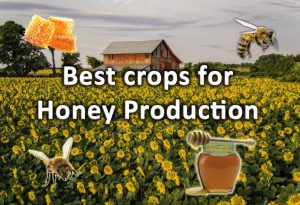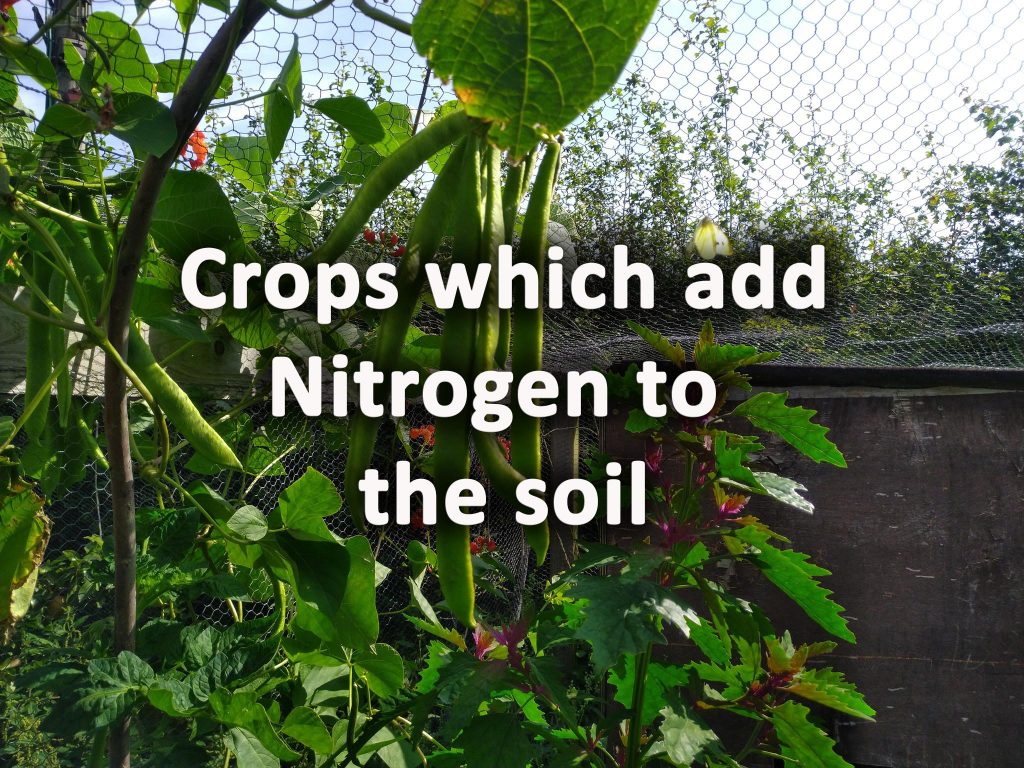Nitrogen fixing plants are some of the most fascinating in the natural world. Whereas most plants depend on fertility in the soil for strong growth, nitrogen fixers create their own.
They do this by forming a symbiotic relationship with bacteria. The bacteria provide the plants with nitrogen through gaseous air pockets in the earth. In return the fixer plant provides sugars to the bacteria creating a harmonious and mutually beneficial relationship.
This relationship enables nitrogen fixers to colonise ground which is too poor for other plants. This makes them ‘pioneers’ with an ability to colonise hostile environments.
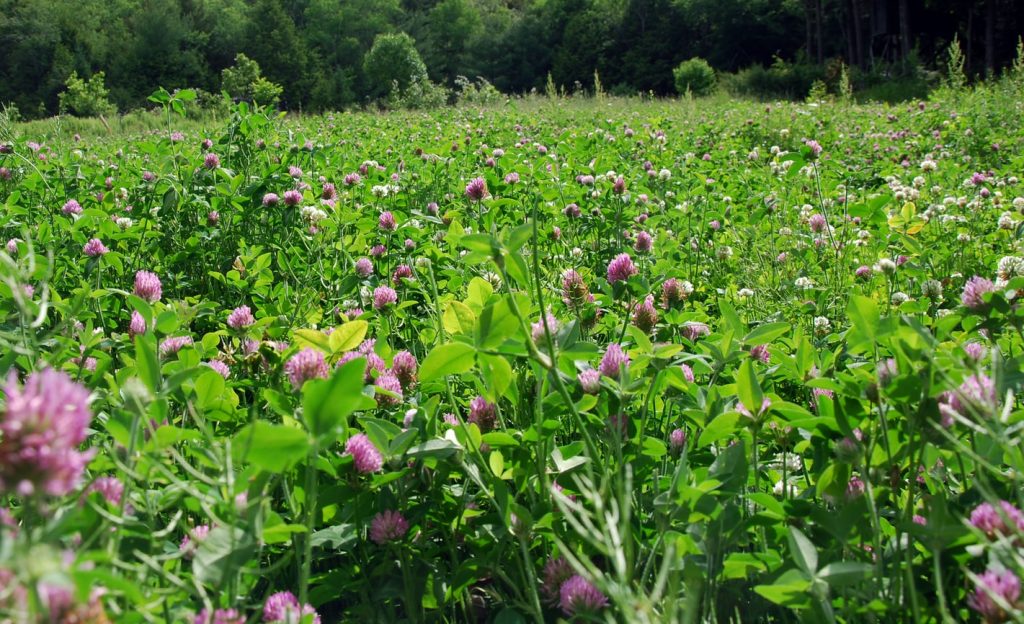
Consequently nitrogen fixers have been used as green manures and cover crops to invigorate sites with infertile soils. This makes them extremely valuable both in the natural world and sustainable farming.
Commonly the question is asked ‘are there any crops which add nitrogen to the soil’. Such a combination would be extremely beneficial to the practice of low energy agriculture.
Thankfully there are indeed crops which add nitrogen to the soil but they are limited in number. We have listed nitrogen fixing crops below so you can boost fertility and harvests simultaneously.
1. Green beans
Also known as French beans green beans can be a term to simply describe unripe beans in a pod. However the French beans are highly popular for the fact the whole pod can be eaten. These beans are originally from tropical regions so prefer a warm growing season. They can also be grown for the individual beans which can be dried and stored for leaner times. These beans can come in both climbing and dwarf bush varieties for easy picking.
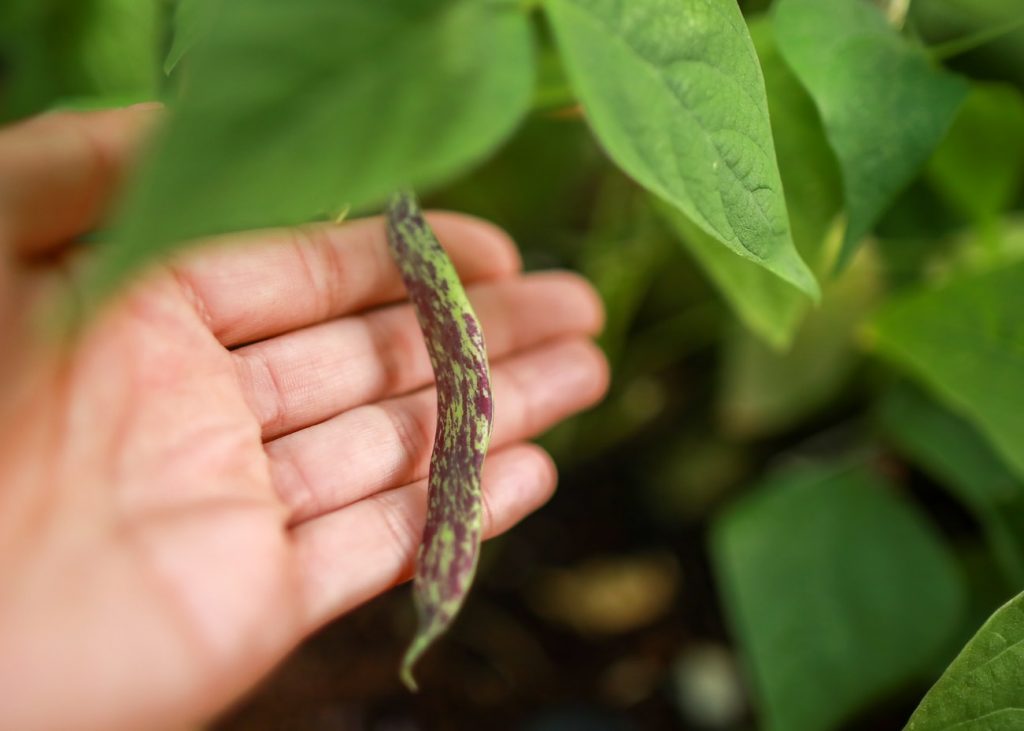
2. Black eyed beans
These are very distinctive from the black eye in the centre and originally came from the Southern United States. These beans subsequently have spread around the world and are now popular in Asia and the Middle East. What makes the bean particularly successful is its tolerance of drought conditions and love of heat. Hence the variety has been embraced by farms and self sufficient homesteads in arid climates. The vines can grow very long and are commonly grown over structures for easy harvesting.
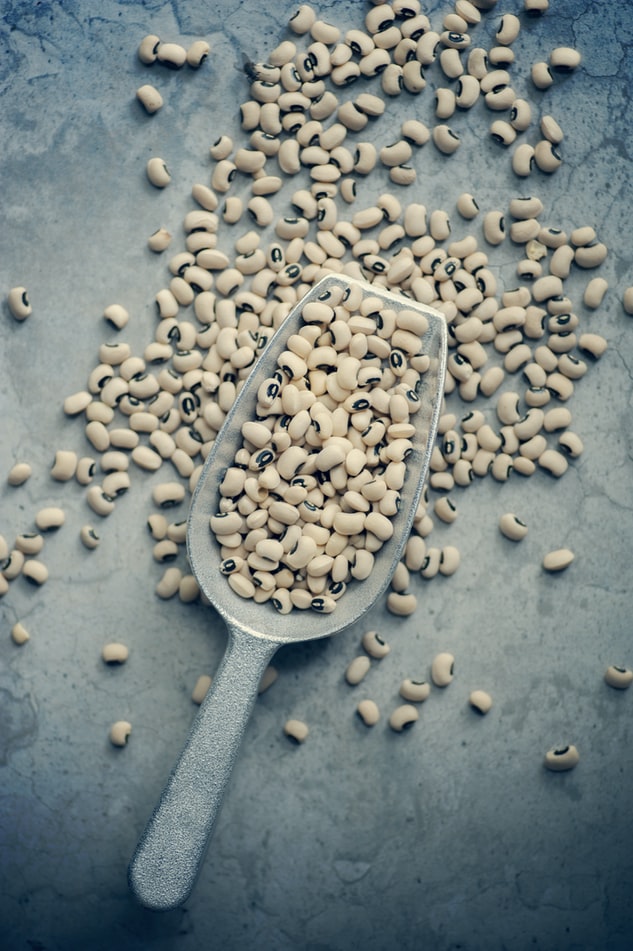
3. Broad beans
Also known as Favas, Broad beans are a very widespread and popular crop across the world. With a compact nature and the ability to grow in colder climates they are a very worthwhile crop. In the Mediterranean these beans would be planted in between olive trees making use of sunlight between the canopies. Their nitrogen fixing properties would feed the olive trees which can occupy the ground for many centuries. These beans can be sown in spring in or autumn and therefore intercropped with other hungry feeding crops.
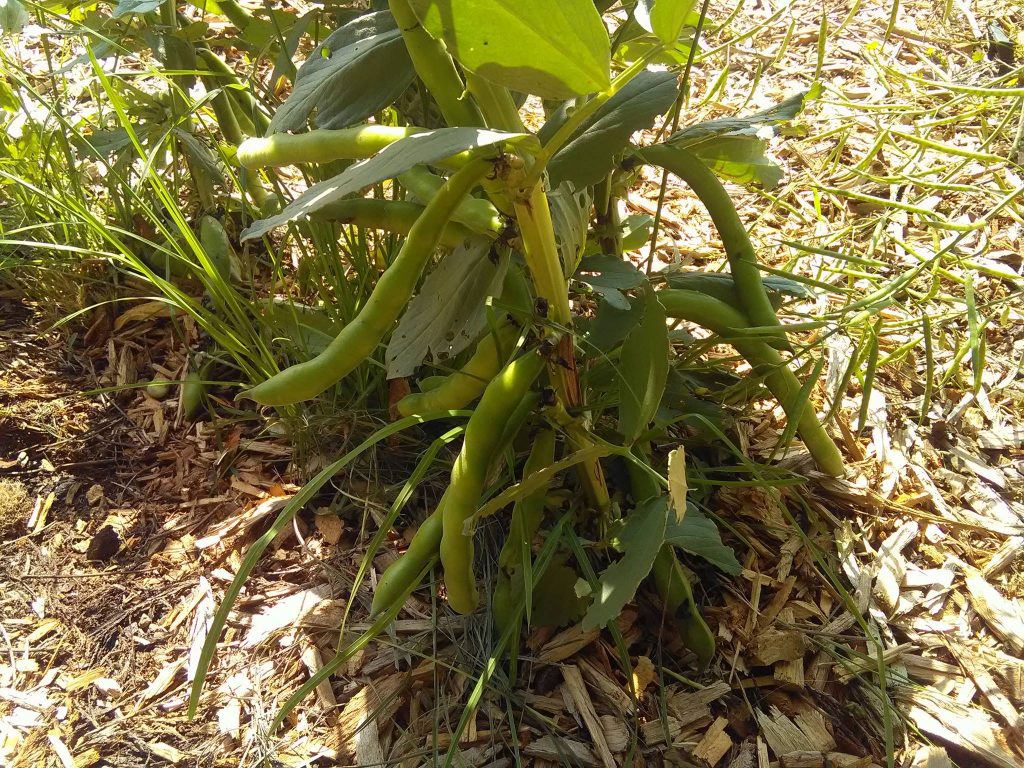
4. Runner beans
Runner beans are a generous crop and also very ornamental plant which originated from Central America. These beans have bright red flowers which makes them completely viable as ornamental garden climbers. Their beans are prolific croppers and the pods can grow to a significant size. Consequently Runner beans have become a favourite of gardeners across the planet. As well as being good climbers they are also perennials in warmer climates. These can be grown in parts of the vegetable plot which have been previously planted with very hungry crop varieties.
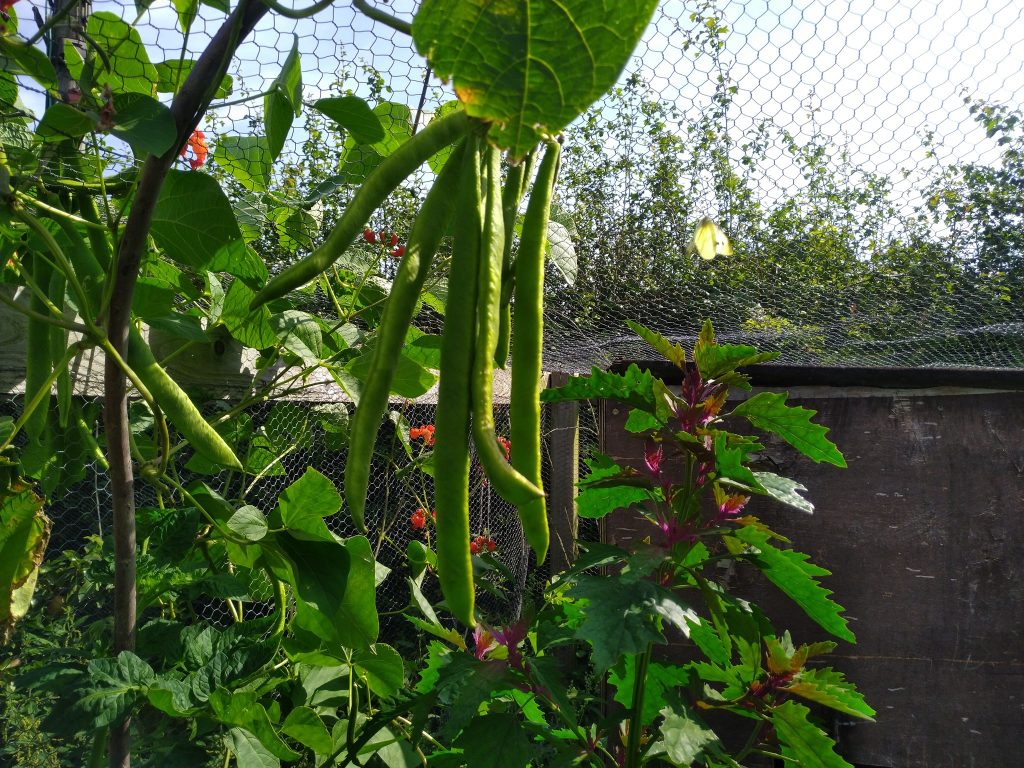
5. Peas
Peas like beans are a very versatile crop and can be used in a variety of different ways. Generally renowned for their sweetness peas are added to sauces and vegetable dishes. There are also varieties bred especially for eating inside the pod such as sugar snap peas. These are typical in dishes which require some crunch such as salads and stir fry’s. Peas can be grown as filler crops and companion planted with lower growing vegetable crops.
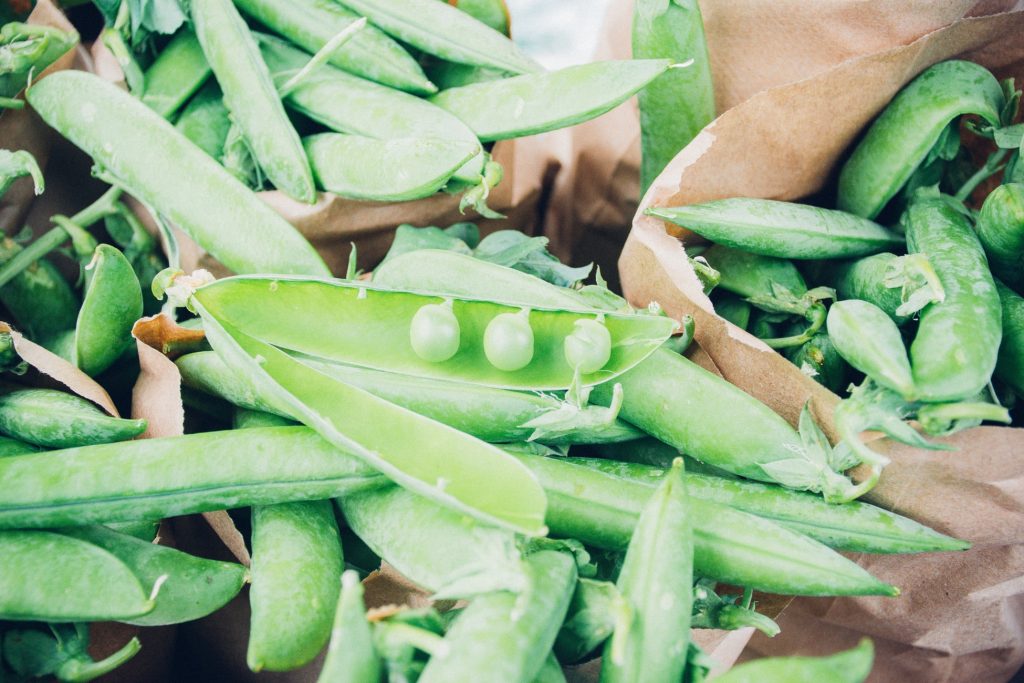
6. Alfalfa
Originally from South and Central Asia, Alfalfa was grown for centuries as a multipurpose crop. This leguminous plant could be grown on mass to improve the fertility and productivity of farmland.
At the same time this plant is heavily regarded as a nutritious animal feed for livestock. Alfalfa is also regarded as a herb and can be eaten raw or cooked. Its seeds can be sprouted and harvested as a sprout crop.
7. Buckwheat
Buckwheat is an extremely useful plant which before the time of industrial fertilisers was common in ancient agriculture. The plant has edible leaves which can be eaten raw or in salads but its primary use is as a grain.
This can be ground up to make flour or added to dishes whole. Its ability to be cultivated in large number without soil amelioration made it a wonder crop. It is still used as a green manure and is an effective bee, pollinator, crop.
8. Fenugreek
This small, leguminous crop originated from Asia and is used as both a herb and a spice. Charred remains of Fenugreek have been found in Bronze Age settlements and the Romans used it to flavour wine.
Today Fenugreek is very common in Indian cooking used in numerous vegetable dishes. Both the seeds and foliage are used in numerous dishes from this region. This crop can also be used as a green manure or nutritious feed for cattle.
9. Peanuts
Peanuts are a common crop and enjoyed by millions worldwide in numerous quantities. These are typically roasted, salted and enjoyed as a snack. Originally from South America this crop has spread around the world and prefers a warm environment.
Peanuts are closely related to beans and are more of a legume than a nut. High in protein and fatty acids peanuts have become a popular agricultural crop worldwide.
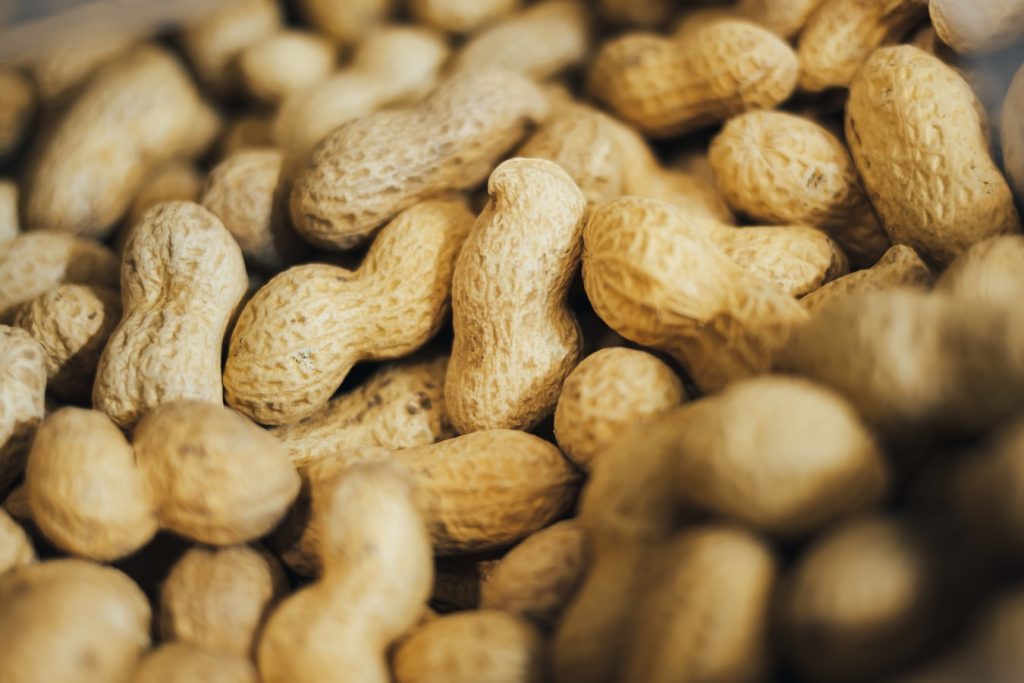
10. Gorse
Not commonly thought of as a crop Gorse is a thorny evergreen shrub native to Europe. This shrub is able to thrive on exposed sites with poor soil. The flowers can be eaten in salads or used to make tea. The main use of gorse however is for feeding animals like cattle when other deciduous leaves are scarce in winter.
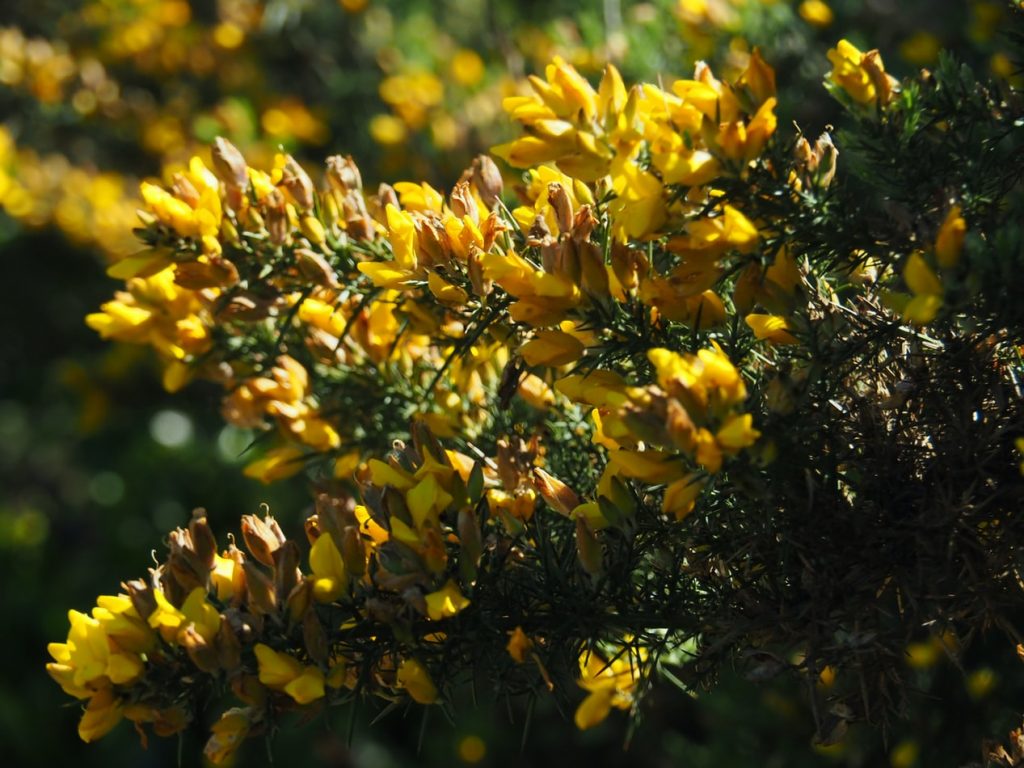
11. Siberian pea tree
This large shrub or small tree is native to Siberia and China and is very efficient at fixing nitrogen. With a robust root system it has been used for erosion control and general ground improvement.
Although not commercially produced for food the peas or seeds are edible when cooked. The flowers are also edible and added to salads and side dishes. The Siberian pea tree is typically grown as an ornamental and is a very useful and popular in temperate food forests.
12. Carob tree
Also known as the African Locust Bean the carob is a small tree native to the Mediterranean and Middle East. During the summer the tree produces large bean like pots which turn dark brown when ripe. These can be ground down to a powder and tastes very much like chocolate.
Carobs have a rich syrup inside which can be used to produce a substitute for maple syrup. Traditionally used as an animal fodder this tree can become a food crop during hard times. Its nitrogen fixing ability and drought tolerance makes it a great crop for arid regions.
Thank you for reading our article on crops which fix nitrogen. Do you know of a nitrogen fixing crop we have missed? If so feel free to comment below or send us a message.
Back to home page

How Self Sufficiency and Homesteading can stop Climate Change

How much land do you need to be self sufficient?
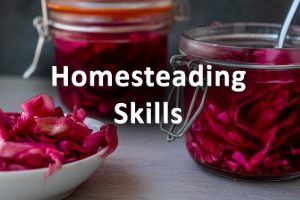
Homesteading skills, for Self Sufficiency

Homesteading Checklist for self sufficiency

A beginner’s guide to self sufficiency & its benefits
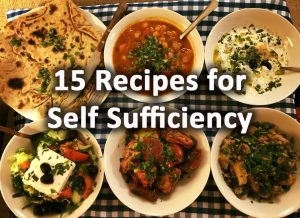
15 recipes for self sufficiency
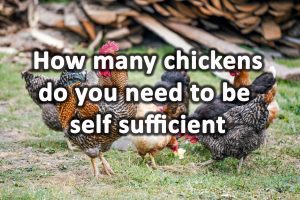
How many chickens do you need to be self sufficient?

27 foods you can forage for free near your home
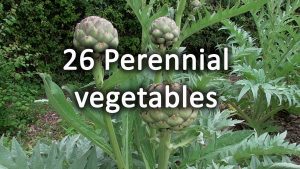
26 Perennial vegetables for the garden

Self sufficient homes

31 Homesteading projects

15 Ways to Store Food without Electricity

The best Climate for self sufficiency
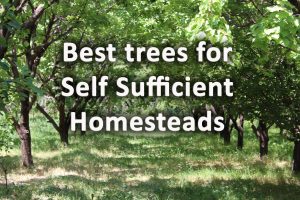
The most useful 22 Trees for a self sufficiency & homesteading
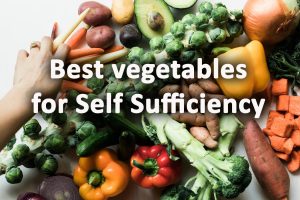
31 Vegetables for self sufficiency

What animals do you need to be self sufficient?

How to stop Climate Change with Crops – Crops for climate change
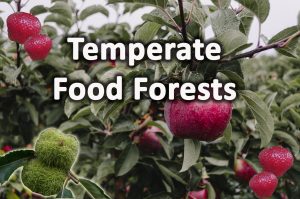
Temperate Food forests

32 Homesteading products for self sufficiency

10 Ways to Sustainably Heat Your Home

10 Ways self sufficient homesteading can be good for your health
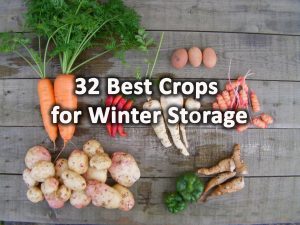
32 Best Crops for Winter Storage
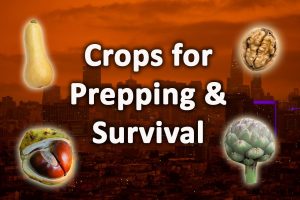
34 crops for prepping and survival
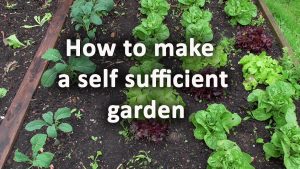
How to make a self sufficient garden
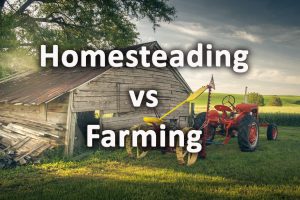
Homesteading verses farming what’s the difference?
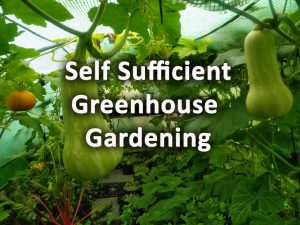
Self sufficient greenhouse gardening
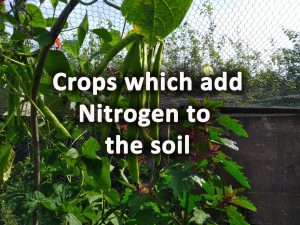
12 Crops which add nitrogen to the soil
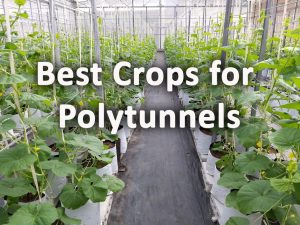
32 of the best crops for Polytunnels
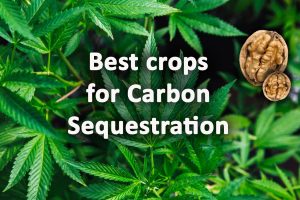
12 Best Crops for Carbon Sequestration
